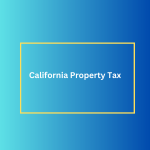
California’s Property Tax Assessments Explained
In California, property tax assessments are determined based on the market value of real property. The process involves several key components
Assessment Value: The assessed value of a property is initially set at its fair market value at the time of acquisition, typically the purchase price. Proposition 13, a California constitutional amendment passed in 1978, limits the annual increase of assessed value to no more than 2% unless there is a change in ownership or new construction.
Proposition 8 Assessments: In cases where the market value of a property falls below its assessed value due to a decline in the real estate market, Proposition 8 allows for a temporary reduction in the assessed value. Once the market value recovers, the assessed value is adjusted accordingly.
Change in Ownership: When there is a change in ownership, such as a sale or transfer of property, the property is reassessed at its current market value. However, certain transfers, such as between spouses or parent-child transfers, may be excluded from reassessment.
New Construction: The addition of new construction to a property typically results in a reassessment of the added value.
Exemptions and Deductions: Some properties may qualify for exemptions or deductions that can affect the assessed value. Examples include the Homeowners’ Exemption, which reduces the assessed value of a home occupied as a principal residence.
Assessment Appeals: Property owners have the right to appeal their property tax assessments. The assessment appeal process allows property owners to present evidence that the assessed value is incorrect.
Tax Rates: Once the assessed value is determined, property taxes are calculated by applying the local tax rate to the assessed value. Tax rates can vary by location and may include additional assessments for specific purposes, such as school districts or special districts.
It’s important for property owners to understand the factors influencing property tax assessments and be aware of any exemptions or deductions they may qualify for. Additionally, staying informed about changes in ownership or property values can help property owners anticipate potential adjustments to their property tax assessments.
California Proposition 13
California Proposition 13 passed in 1978, is a landmark constitutional amendment that significantly changed the state’s property tax system. The key provisions of Proposition 13 include:
Property Tax Limitation: Proposition 13 limits the property tax rate to 1% of a property’s assessed value. The assessed value is initially set at the property’s fair market value at the time of acquisition (typically the purchase price).
2% Annual Cap on Assessment Increases: Proposition 13 places a cap of 2% on the annual increase of a property’s assessed value, unless there is a change in ownership or new construction. This provision aims to provide stability and predictability for property owners by limiting how much their property taxes can increase each year.
Reassessment upon Change in Ownership: When there is a change in ownership of a property, such as a sale or transfer, Proposition 13 requires the property to be reassessed at its current market value. This reassessment establishes a new base value for the property for future property tax calculations.
New Construction Assessed at Market Value: Any new construction or additions to a property are assessed at their current market value, not subject to the 2% annual cap on assessment increases.
Voter Approval for New Taxes: Proposition 13 also added a requirement for a two-thirds vote of the electorate to approve any new state taxes, including local special taxes.
Protection for Older Homeowners: Proposition 13 includes provisions to protect older homeowners by allowing them to transfer their current assessed value to a replacement residence, as long as certain conditions are met.
Commercial and Industrial Properties: Proposition 13 applies not only to residential properties but also to commercial and industrial properties. As a result, these properties benefit from the same limitations on tax rate and assessment increases.
While Proposition 13 has provided property tax relief for homeowners and businesses, it has also been a subject of debate. Critics argue that it has led to disparities in property tax burdens among property owners and limited local governments’ ability to generate revenue. Proponents, on the other hand, emphasize the protection it provides against rapid and unpredictable increases in property taxes. The impacts and implications of Proposition 13 continue to be significant in California’s property tax landscape.
California Proposition 8
California Proposition 8, not to be confused with Proposition 13, is another element of the state’s property tax system. Proposition 8 allows for the temporary reduction of assessed property values when the market value of a property falls below its current assessed value. Here are the key points about Proposition 8 assessments:
Market Value Decline: Proposition 8 comes into play when there is a decline in the market value of a property. This could occur due to changes in the real estate market, economic downturns, or other factors affecting property values.
Temporary Reduction: Proposition 8 allows for a temporary reduction in the assessed value of a property to reflect its lower market value. This means that during periods of declining property values, property owners may benefit from a reduction in their property tax assessments.
Annual Assessment Adjustments: Unlike Proposition 13, which imposes a 2% cap on annual assessment increases, Proposition 8 allows for annual adjustments based on changes in the property’s market value. If the market value of a property falls below its current assessed value, the assessor can temporarily reduce the assessed value.
Recovery of Assessed Value: When the real estate market improves and the property’s market value increases, the assessed value under Proposition 8 is adjusted upward. The property tax assessment returns to the lower of the Proposition 8 adjusted value or the Proposition 13 factored base year value.
Assessment Appeals: Property owners have the right to appeal their property tax assessments under Proposition 8. They can provide evidence to the assessor that the market value of their property has declined, leading to a potential reduction in the assessed value.
Not Automatic: It’s important to note that Proposition 8 assessments are not automatic. Property owners need to initiate the process by filing an assessment appeal with the local assessor’s office and providing evidence of the decline in market value.
Local Variations: The application of Proposition 8 may vary by county, and the assessor’s office in each county is responsible for implementing and overseeing the process.
In summary, Proposition 8 assessments offer a mechanism for property owners to receive temporary relief from higher property tax assessments during periods of declining property values. However, it requires proactive action on the part of property owners to appeal and provide evidence of the reduced market value of their properties.
Determining potential property tax assessments for a home you’re looking to buy is a crucial step in the process of calculating your estimated mortgage loan payments. Feel free to reach out to Treasury Funds Home Loans, Inc., at any time, if you have inquiries about projected payments, including details about property tax assessments. We’re here to assist you.
